The compound that would undergo hydration very easily is
CH3COCH2Cl
CH3CH2CHO
Cl3C−CHO
Cl3CCH2COCH3
The correct Answer is:C
To determine which compound undergoes hydration very easily, we need to analyze the given compounds based on their structure and the presence of functional groups, particularly focusing on the influence of chloro groups and the type of carbonyl group (aldehyde or ketone).
1. Identify the Compounds:
- We have four compounds to consider:
1. Compound 1: Contains one keto group and one chloro group.
2. Compound 2: Contains one aldehyde group (no chloro groups).
3. Compound 3: Contains one aldehyde group with three chloro groups.
4. Compound 4: Contains one keto group with three chloro groups.
2. Understand the Role of Chloro Groups:
- Chloro groups are electron-withdrawing groups. Their presence increases the electrophilicity of the carbonyl carbon, making it more susceptible to nucleophilic attack, which is essential for hydration.
3. Analyze Each Compound:
- Compound 1: Has one chloro group and one keto group. Moderate potential for hydration.
- Compound 2: Has no chloro groups. Least likely to undergo hydration.
- Compound 3: Has three chloro groups and one aldehyde group. High potential for hydration due to multiple electron-withdrawing groups.
- Compound 4: Has three chloro groups and one keto group. Also has a high potential for hydration but is influenced by the presence of a methyl group.
4. Compare Compounds 3 and 4:
- Both compounds have three chloro groups, but Compound 4 has a methyl group that exerts a +I (inductive) effect, which can decrease the electrophilicity of the carbonyl carbon, making it less favorable for hydration compared to Compound 3.
5. Conclusion:
- Based on the analysis, Compound 3, which has three chloro groups and an aldehyde, will undergo hydration very easily due to the strong electron-withdrawing effect of the chloro groups without the counteracting +I effect from a methyl group.
Final Answer:
The compound that would undergo hydration very easily is Compound 3.
---
- We have four compounds to consider:
1. Compound 1: Contains one keto group and one chloro group.
2. Compound 2: Contains one aldehyde group (no chloro groups).
3. Compound 3: Contains one aldehyde group with three chloro groups.
4. Compound 4: Contains one keto group with three chloro groups.
- Chloro groups are electron-withdrawing groups. Their presence increases the electrophilicity of the carbonyl carbon, making it more susceptible to nucleophilic attack, which is essential for hydration.
- Compound 1: Has one chloro group and one keto group. Moderate potential for hydration.
- Compound 2: Has no chloro groups. Least likely to undergo hydration.
- Compound 3: Has three chloro groups and one aldehyde group. High potential for hydration due to multiple electron-withdrawing groups.
- Compound 4: Has three chloro groups and one keto group. Also has a high potential for hydration but is influenced by the presence of a methyl group.
- Both compounds have three chloro groups, but Compound 4 has a methyl group that exerts a +I (inductive) effect, which can decrease the electrophilicity of the carbonyl carbon, making it less favorable for hydration compared to Compound 3.
- Based on the analysis, Compound 3, which has three chloro groups and an aldehyde, will undergo hydration very easily due to the strong electron-withdrawing effect of the chloro groups without the counteracting +I effect from a methyl group.
The compound that would undergo hydration very easily is Compound 3.
Topper's Solved these Questions
- CARBONYL COMPOUNDS (ALDEHYDES & KETONES ) & CARBOXYLIC ACID BOOK - RESONANCE ENGLISHCHAPTER - CARBONYL COMPOUNDS (ALDEHYDES & KETONES ) & CARBOXYLIC ACID EXERCISE - Part -III
31 Videos
- CARBONYL COMPOUNDS (ALDEHYDES & KETONES ) & CARBOXYLIC ACID BOOK - RESONANCE ENGLISHCHAPTER - CARBONYL COMPOUNDS (ALDEHYDES & KETONES ) & CARBOXYLIC ACID EXERCISE - Part -IV
23 Videos
- CARBONYL COMPOUNDS (ALDEHYDES & KETONES ) & CARBOXYLIC ACID BOOK - RESONANCE ENGLISHCHAPTER - CARBONYL COMPOUNDS (ALDEHYDES & KETONES ) & CARBOXYLIC ACID EXERCISE - APSP
1 Videos
- BIOMOLECULES & POLYMERBOOK - RESONANCE ENGLISHCHAPTER - BIOMOLECULES & POLYMEREXERCISE - ORGANIC CHEMISTRY(Biomolecules & Polymer)
34 Videos
- CHEMICAL KINETICSBOOK - RESONANCE ENGLISHCHAPTER - CHEMICAL KINETICSEXERCISE - PHYSICAL CHEMITRY (CHEMICAL KNIETICS & RADIOACTIVITY)
49 Videos
Similar Questions
Knowledge Check
The compound which undergoes Srl reaction most rapidly is :
A B
B C
C D
D
Which of the following compound undergoes dehydrochlorination most easily when treated with alcoholic KOH ?
ACH3−CH∣CH3−CH2ClBCH3−CH∣CH3−C2H5CCH3−CH2−CH2ClD(CH3)3C−ClIdentify the compounds that will undergo nucleophilic aromatic substitution reaction :
A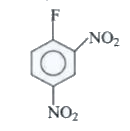 B
B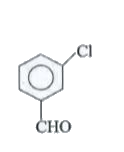 C
C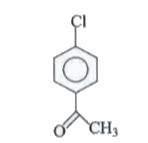 D
D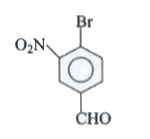
The aromatic compound would be :
View SolutionAmong the following compounds which can be dehydrated very easily is:
View SolutionIn the following pairs of halogen compounds, which would undergo SN2 reaction faster?

View SolutionIn the following pair of halogen compounds which would undergo SN2 reaction faster?
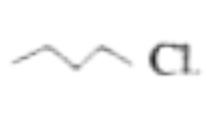

View SolutionThe compound which does not react with bromine easily at room temperature is
View Solution
